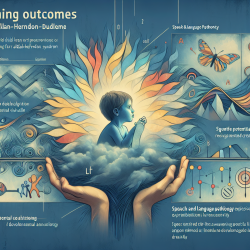Understanding the Burden of Interpersonal Violence in AI/AN Communities
As practitioners dedicated to improving the lives of children, it's crucial to understand the unique challenges faced by American Indian and Alaska Native (AI/AN) communities. A recent review by Sapra et al. (2014) highlights the alarming prevalence of interpersonal violence, including child abuse, violence against women, and elder abuse, in these communities. This blog aims to unpack these findings and provide actionable insights for practitioners.
The Stark Reality: Data and Prevalence
The data is clear: AI/AN populations experience some of the highest rates of interpersonal violence in the United States. For instance, AI/AN women have the second highest prevalence of violence against women among all racial/ethnic groups. Similarly, child abuse rates are among the highest in AI/AN communities. These statistics are not just numbers; they represent real individuals and families enduring severe trauma.
Key Risk Factors Identified
The review identifies several risk factors contributing to the high prevalence of interpersonal violence in AI/AN communities:
- Historical Trauma: The legacy of historical trauma, including forced assimilation and cultural erosion, continues to impact AI/AN communities.
- Socioeconomic Challenges: High poverty rates, unemployment, and lower educational attainment are prevalent, exacerbating the risk of violence.
- Substance Abuse: Alcohol and substance abuse are significant risk factors, often linked to historical trauma and socioeconomic stressors.
Challenges in Data Collection
One of the critical challenges highlighted in the review is the difficulty in obtaining accurate prevalence data. Reporting inconsistencies, cultural differences in defining abuse, and jurisdictional issues between tribal, state, and federal authorities contribute to underreporting and inaccurate data.
Recommendations for Practitioners
Given these challenges, what can practitioners do to improve outcomes for AI/AN communities?
- Engage in Culturally Sensitive Practices: Understanding and respecting cultural differences is vital. Practitioners should work closely with tribal leaders and community members to ensure culturally appropriate interventions.
- Advocate for Better Data Collection: Support efforts to improve data collection methods, ensuring they are culturally sensitive and inclusive of AI/AN perspectives.
- Focus on Prevention and Education: Develop programs that address the root causes of violence, such as historical trauma and substance abuse, through education and community engagement.
Encouraging Further Research
The review by Sapra et al. (2014) underscores the need for more research into interpersonal violence in AI/AN communities. Practitioners are encouraged to contribute to this body of knowledge by conducting research that is culturally sensitive and community-focused.
To read the original research paper, please follow this link: Family and partner interpersonal violence among American Indians/Alaska Natives.










